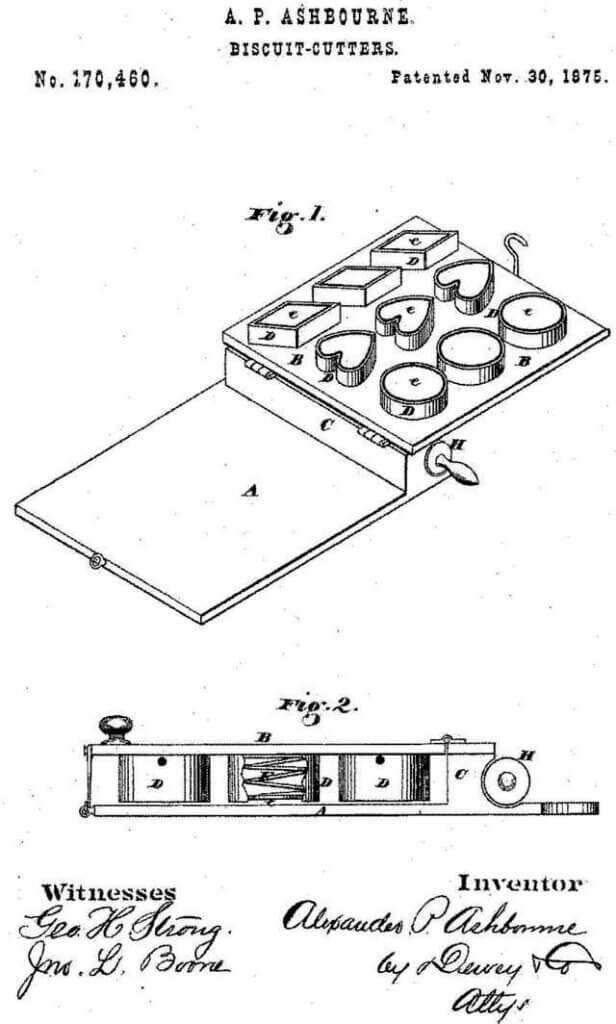In the annals of culinary history, one name stands out: Alexander Ashbourne. His innovation, the biscuit cutter, not only transformed kitchens but also left a lasting impact on the cooking world.
The Birth of a Revolution
Born in 1820 and departing from this world in 1915, Alexander Ashbourne’s journey was one of ingenuity and determination. In 1875, his groundbreaking invention, patent no. 170,460, announced a new era in biscuit-making. This humble tool would soon grace kitchens and restaurants worldwide, making the once hard process of biscuit shaping easier.
Unveiling the Unsung Hero
Despite biscuits being a household staple and a fixture in restaurant menus, few were aware of the mastermind behind the uniformity and efficiency of biscuit production. Alexander Ashbourne, an African American innovator, defied odds and redefined culinary norms.
From Catering to Innovation
Ashbourne’s path to innovation was paved with hands-on experience. Catering to the elite of Philadelphia, he honed his craft and witnessed firsthand the inefficiencies plaguing biscuit production. It was at the 1863 Emancipation Celebration that Ashbourne’s epiphany struck: there had to be a better way.
The Birth of the Biscuit Cutter Device
Driven by a relentless pursuit of perfection, Ashbourne spent a decade crafting his masterpiece. The result was a marvel of engineering: a spring-loaded biscuit cutter, promising uniformity in shape, size, and efficiency in production. Featuring a hinged board on a metal plate and an array of cutter shapes, his invention changed how chefs cooked.✊🏾

Beyond Biscuits: A Culinary Visionary
Alexander Ashbourne’s journey of innovation didn’t stop with biscuit cutters. In fact, his impact reached even further, shaping the way we use coconut oil today.
Breaking Technological Boundaries
Back in the late 1800s, technological limitations were no match for Ashbourne’s determination. From 1875 to 1880, he dedicated himself to perfecting the refining process of coconut oil, despite the challenges of the time.💪🏾
A Leap Forward in Innovation
In 1880, he leveled up again, snagging another patent. This time, he worked his magic on coconut oil, making it super versatile for everyday use!. Through meticulous steps including filtration, bleaching, high-temperature heating, and hydrogenation, Ashbourne transformed coconut oil, removing unsaturated fatty acids and making it suitable for widespread domestic use.
From Kitchen to Cosmetics
Ashbourne’s revolutionary approach changed the coconut oil industry and opened up new possibilities for its applications. Coconut oil, once limited in use, became a versatile ingredient, finding its way into a wide variety of products, including haircare items, foods, and fragrances.
Mass Production and Domestic Consumption
Thanks to Ashbourne’s advancements, coconut oil became more accessible for mass production and everyday use. This not only increased its commercial value but also made it a staple ingredient in countless households around the world.
Ashbourne’s legacy is not just in the kitchens of yesteryears, but also in the everyday products we use today, a testament to his ingenuity, determination, and the power of innovation.
Legacy and Beyond
As the late 1880s approached, Ashbourne, now recognized as the pioneer of biscuit cutting, embarked on a new chapter in Oakland, California. There, he transitioned from inventor to entrepreneur, owning and operating a modest grocery store. His legacy lives on, not only in the kitchens of yesteryears 🎯 but also in the coconut-scented products and uniform biscuits of today.
At the age of 95, Alexander Ashbourne, a man born into slavery, reached the conclusion of his journey, but his impact resonates through generations, serving as a testament to the power of innovation and perseverance. 🙂(Bone Appetit 🍽)

